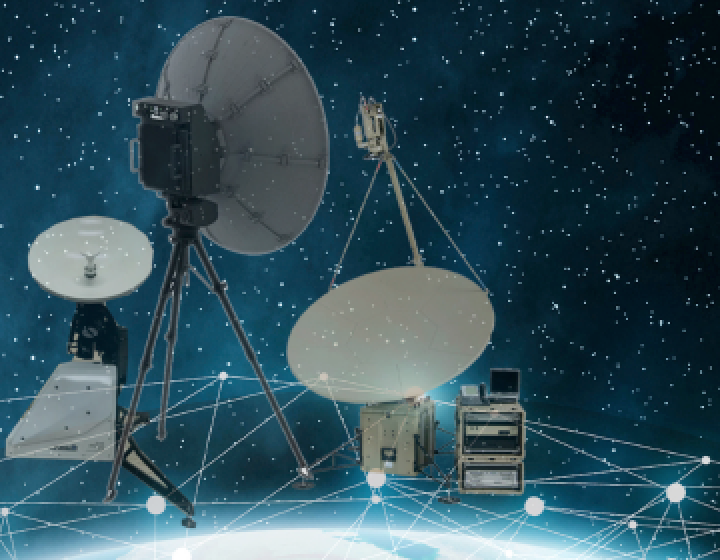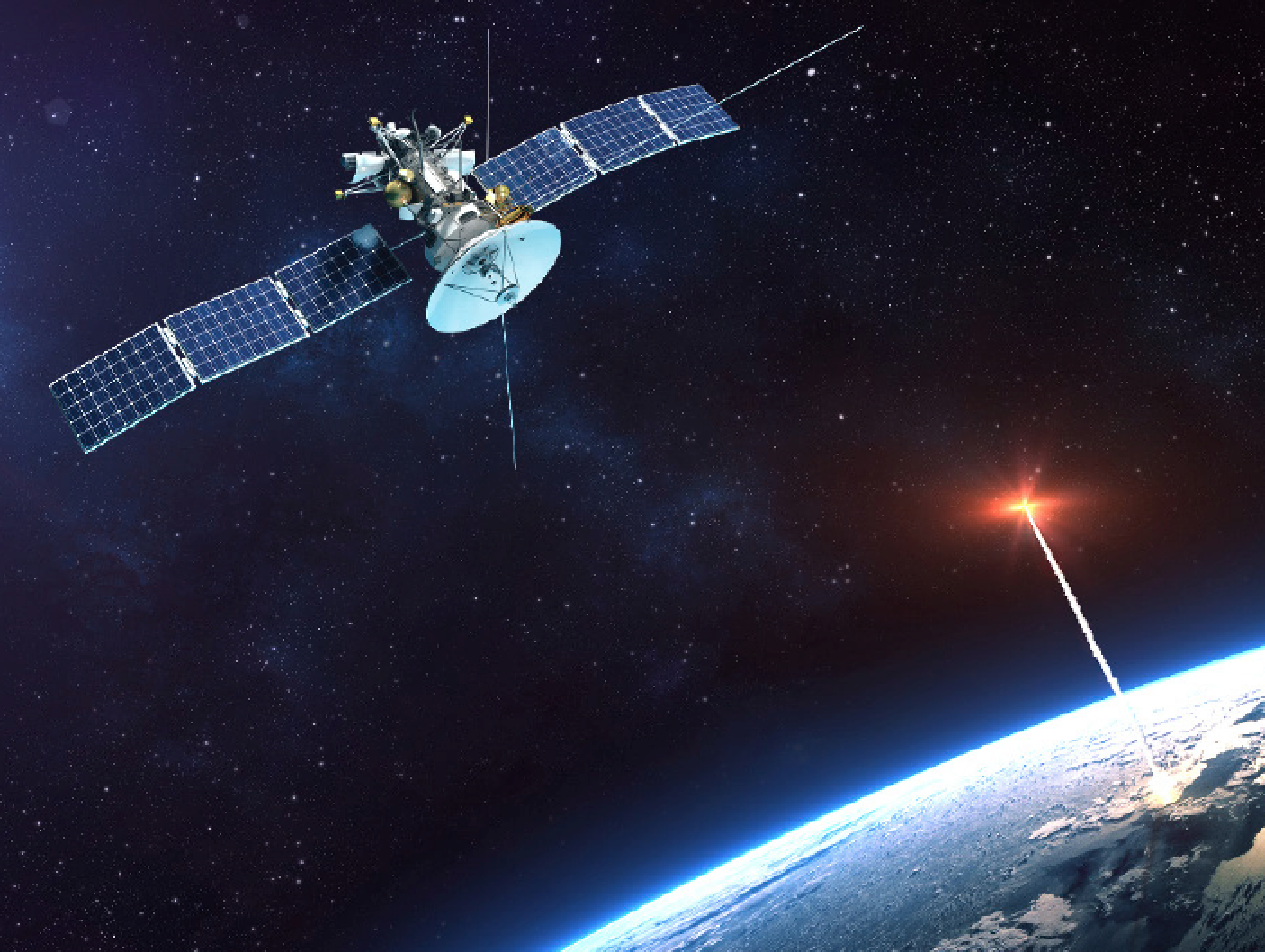2022 will be remembered by many as the year ubiquitous connectivity across multiple networks was made possible with a single, smart terminal, marking the start of a new era of ground system technology developed and proven by ALL.SPACE.

The initial production of the world’s first multi-network, multi-orbit platform
Brian Billman, Chief Marketing Officer
Until now, satellite systems were closed off, often proprietary, and unable to communicate with other satellite, cellular or terrestrial networks.


Our mission to converge advanced communications over multiple networks and operators over one terminal began about nine years ago and led us to breakthrough discoveries in the new field of transformational optics.
This year, ALL.SPACE developed the world’s first and only smart terminal, a software-defined platform that is capable of connecting across networks via multiple, simultaneous, full-performance links that converges satellite and cellular network access, intelligent routing, edge computing and specialized modems into a single, integrated solution.
The smart terminal’s unique ability to connect satellite operators across orbits and cellular operators across all available networks creates the world’s most convergent communications platform.
A Year of Historic Firsts
Over the past 12 months, ALL.SPACE successfully completed a series of historic, first-of-their-kind, multi-orbit terminal trials, focused on meeting specific communications requirements for commercial, government and defense markets.
At the start of the year, together with SES Government Solutions, ALL.SPACE demonstrated the smart terminal’s multi-link capabilities to meet the rigorous conditions and challenging connectivity demands of U.S. and NATO Forces during GEO and MEO resiliency tests at the U.S. Army proving grounds in Aberdeen, Maryland.

Brian Billman
During the spring, ALL.SPACE successfully completed field tests with Telesat showcasing the smart terminal’s ability to link with satellites in LEO and GEO orbits, proving the platform’s world-first, all-orbit capability.
Comtech delivers game-changing battle ground infrastructure amid a year of rising near-peer threats With an array of near-peer threats reaching Cold War levels, the US and allied global communications requirements have quickly shifted to ground- sector advancements where Comtech excels. Comtech has designed and delivered software-defined gateway and portable modems into the defense market for more than a decade, offering software- only upgrades to fielded in-use hardware to instantly bridge the gap between old standards and new JADC2- level capabilities.

Comtech Satellite
Network Technologies
Daniel Gizinski
It has been a game-changer for our in-theater forces. In 2022, Comtech unveiled breakthrough systems that have had an immediate impact on the battlespace.

A Year Of Comtech Defense Innovations
Comtech introduced groundbreaking, military-grade, communications solutions for the defense market this year — all key to the Department of Defense modernization program.
Comtech’s new CDM-780 Gateway modem is the latest and most powerful in a long line of backbone modems, now capable of managing unprecedented amounts of data delivered over new and complex wideband GEO, MEO and LEO satellites and constellations. (See Figure 1 on the following page.)

CDM-780 Gateway modem
Our new SLM-5650C2 portable software-defined modem can be carried and operated in manpacks, enabling multi-orbit, on-the-fly comms capabilities on the frontline for a real competitive edge. (See Figure.)
Comtech is dedicated to bringing high- speed broadband to the fingertips of warfighters with our growing lineup of integrated, end-to-end communications platforms and solutions.
In 2022, Comtech not only introduced new technologies, we also enabled third-party manufacturers and service providers to implement and integrate some of our intellectual property and communications waveforms into non-Comtech hardware solutions.
This will help ensure users have access to existing infrastructure across a range of platforms and locations.
Pride-Driven Technologies
One of the things I’m most proud of in 2022 is our ability to deliver solutions based on our customers’ problem sets rather than a defined path to addressing requirements.

SLM-5650C2 portable software-defined modem
We’ve been able to deliver advanced satellite communications capabilities, resilient troposcatter networks, and supporting equipment, based on real challenges and issues our customers are experiencing with their gear in the field.
Our defense customers have stated both privately and publicly this year that our products have proven to provide reliable communications in contested theaters where other offerings simply could not. That’s what it’s all about — enabling a communications lifeline when lives are on the line.
When our team hears directly from defense customers about how much they trust and rely on Comtech products, there’s a strong sense of pride across the company that we’re playing a role in defending U.S. and Allied interests around the world.

This really all starts with our ability to listen to and meet customer challenges, as we roll up our sleeves and meet with our end users on the technology proving grounds during tech and solution demos in the field.
In the early stages of the Russian invasion in Ukraine, Comtech donated several small form factor troposcatter systems and upgrade kits for fielded gear in the region.
The ability to understand the challenges and move fast to support them and enable comms in a denied environment is critical. And as a result of our work in Ukraine, we have seen demand for and are filling dozens of follow-on system orders via foreign military sales channels.
We are also proud of our longstanding dedication to manufacturing defense products in the U.S., making Comtech a strong source for military products and innovation.
We are on the verge of a major 150,000 square foot expansion of our manufacturing and engineering center of excellence in Chandler, Arizona, as we build on our mission to connect commanders and every U.S. and allied warfighter across the battlespace with fast, resilient communications capabilities around the world.
www.comtech.com

Daniel Gizinski
Daniel Gizinski was named President of Comtech Satellite Networks Technologies, Inc. (a U.S. Corporation) on January 3, 2022. Previously, he held various senior management positions at Comtech, including Vice President of Product and Strategy for Comtech Systems Inc. Prior to joining Comtech in 2019, Daniel held program management and leadership roles at General Electric, Sierra Nevada Corporation and L3Harris Technologies. Daniel holds a Bachelor’s degree in Electrical Engineering from the University of Virginia and a Master’s degree from Duke University.
Intelsat is the largest provider of commercial satellite communications to the U.S. government, and our role is to deliver mission-critical communications services that empower our customers’ success.

Keeping warfighters
connected
Dave Micha, President, Intelsat General Communications
We are collaborating with partners and key industry players to build the next-generation unified network infrastructure needed to deliver resilient multi-layered connectivity everywhere.

Years in the making, and now with broader adoption of open standards, Intelsat’s satellite connectivity has advanced to a new level.
Intelsat General is more than ready to deliver reliable broadband for more sophisticated C5ISR (Command, Control, Computers, Communications, Cyber, Intelligence, Surveillance, & Reconnaissance), innovative warfighter applications, and all- domain communications.
This comms technology enables and supports government and military communications in contested and remote locations.
Intelsat has shifted toward a multi-layered approach to connectivity — migrating away from solely relying on geostationary (GEO) satellite-based communication, which adds the benefits of Low Earth Orbit (LEO) connectivity to our reliable connectivity solutions.
Our software- defined satellites (SDS) will be the core of the future, next-generation Unified Network we are creating.
SDS’s advantages include fast reconfiguration, enhanced capabilities, dynamic bandwidth allocation, “follow- me” beams, automatic frequency switching, tailored geographic coverage, and asset awareness/tracking across aligned operations.
Intelsat and our partner OneWeb have already demonstrated to the U.S. Department of Defense, fiber-like connectivity with transport layer diversification between GEO and LEO constellations that will be crucial in delivering uninterrupted mission- critical broadband connectivity for global armed forces.
The company is well-positioned to meet the dynamic needs of today’s military missions through its next- generation Unified Network — which will be a step-change transformation in the delivery of satellite connectivity.
www.intelsat.com/solutions/government/
Maintaining decision superiority
This year, Kratos became a partner recipient on awards for two separate advanced, strategic, government programs.

Kratos receives multiple awards
to bolster military space initiatives
Chris Badgett, Vice President of Technology, Kratos Space
These programs will incorporate Kratos’ OpenSpace Platform, a software- defined, satellite ground system. In the past, standing up new satellite services commonly required weeks or even months using traditional hardware-based ground systems.
This platform enables warfighters to instantiate new services in minutes. OpenSpace was designed to be interoperable across domains, with enhanced resilience and flexibility, assuring communications access and the ability to maintain decision superiority.
SatCom Modernization

Kratos was also awarded a U.S. Army Futures Command contract to demonstrate SATCOM modernization capabilities enabling the government to field SATCOM networks. This modernization effort will be powered by Kratos’ OpenSpace platform and includes streamlining gateway and remote terminal capabilities supported by multiple vendors, reducing life-cycle costs and supporting adaptive, dynamic space operations.
Today’s hardware-based networks cannot deliver the speed, interoperability or agility to meet these goals, whereas a standards-based architecture that is layered and extensible and software-defined, such as OpenSpace, can drive digital transformation and SATCOM modernization efforts.
Space Domain Awareness
Kratos presented new Space Domain Awareness (SDA) services at the Advanced Maui Optical and Space Surveillance Technologies (AMOS) Conference that are now available to the military and commercial markets.
In today ’s contested and congested environment, a complete operational pic ture of space domain awareness is cr itical.
Kratos is the only company to offer SDA services integrated across the orbital, link, and terrestrial segments to support the commercial, civil, and defense markets.

Chris Badgett
Powered by sites collecting and analyzing data from 140+ sensors at over 20 global locations , Kratos’ services offer critical insights that augment today’s traditional resources and tools for understanding and responding to emerging on-orbit threats.
www.kratosdefense.com
Chris Badgett is vice president of technology for Kratos Space. Prior to Kratos, Mr. Badgett served in the U.S. Air Force as a weapons engineer in the Air Force Research Lab. Mr. Badgett holds a BS in Electrical Engineering from University of Tennessee and an MS in Space Systems from the Air Force Institute of Technology.

